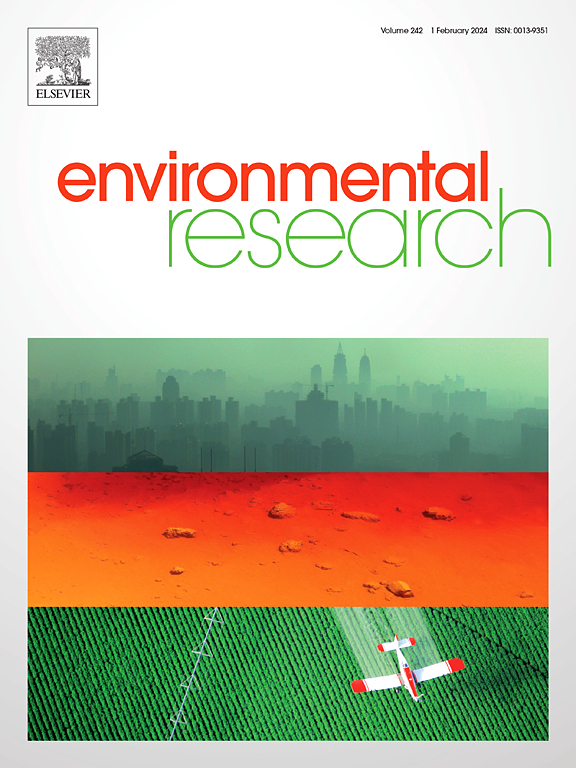Reduced primary productivity and notable resilience of phytoplankton community in the coastal water of southern China under a marine heatwave
IF 7.7
2区 环境科学与生态学
Q1 ENVIRONMENTAL SCIENCES
引用次数: 0
Abstract
Increasing frequency, intensity and duration of marine heatwaves (MHWs) are supposed to affect coastal biological production in different regions to different extents. To understand how MHWs impact coastal primary productivity and community succession of phytoplankton and assess the changes in resilience of phytoplankton communities, we conducted a mesoscale enclosure experiment simulating a MHW in the coastal water of southern China. After 8 days of the MHW (+3 °C) treatment, community biomass was significantly lower than the control's, and primary productivity per volume of water was reduced by about 56%. Nevertheless, the phytoplankton community retrieved its biomass and primary productivity after the temperature was subsequently reset to that of the control. Although the MHW treatment decreased the abundance of diatom and increased the percentages of Synechococcus and Prasinophytes, the main phytoplankton functional types showed positive resilience that allowed the recovery of the phytoplankton community after the MHW. Our results indicate that key phytoplankton functional types in the southern coastal waters of China exhibited significant resilience, recovery, and temporal stability under the influence of the marine MHW by 3 °C rise. However, reduced primary productivity during the MHW period, along with decreased biomass density, might significantly influence secondary producers. In addition, the altered phytoplankton community structure may affect coastal food web processes at least during the MHW period.
海洋热浪下中国南方沿海水域浮游植物群落初级生产力下降和显著的恢复能力。
海洋热浪(MHWs)的频率、强度和持续时间的增加会对不同地区的沿岸生物生产产生 不同程度的影响。为了了解海洋热浪对沿岸初级生产力和浮游植物群落演替的影响,并评估浮游植物群落恢复能力的变化,我们在中国南方沿岸水域进行了模拟海洋热浪的中尺度围隔实验。经过 8 天的 MHW(+3 oC)处理后,群落生物量明显低于对照组,单位体积水体的初级生产力降低了约 56%。然而,当温度恢复到对照组的水平后,浮游植物群落的生物量和初级生产力又恢复了。虽然高温热浪处理降低了硅藻的丰度,增加了 Synechococcus 和 Prasinophytes 的比例,但主要浮游植物功能类型表现出了积极的恢复能力,使浮游植物群落在高温热浪后得以恢复。我们的研究结果表明,在海洋 MHW 上升 3 oC 的影响下,中国南部沿岸海域的主要浮游植物功能类型表现出显著的恢复力、复原力和时间稳定性。然而,MHW 期间初级生产力的降低以及生物量密度的下降可能会严重影响次级生产者。此外,浮游植物群落结构的改变可能至少在 MHW 期间影响沿岸食物网过程。
本文章由计算机程序翻译,如有差异,请以英文原文为准。
求助全文
约1分钟内获得全文
求助全文
来源期刊

Environmental Research
环境科学-公共卫生、环境卫生与职业卫生
CiteScore
12.60
自引率
8.40%
发文量
2480
审稿时长
4.7 months
期刊介绍:
The Environmental Research journal presents a broad range of interdisciplinary research, focused on addressing worldwide environmental concerns and featuring innovative findings. Our publication strives to explore relevant anthropogenic issues across various environmental sectors, showcasing practical applications in real-life settings.
 求助内容:
求助内容: 应助结果提醒方式:
应助结果提醒方式:


